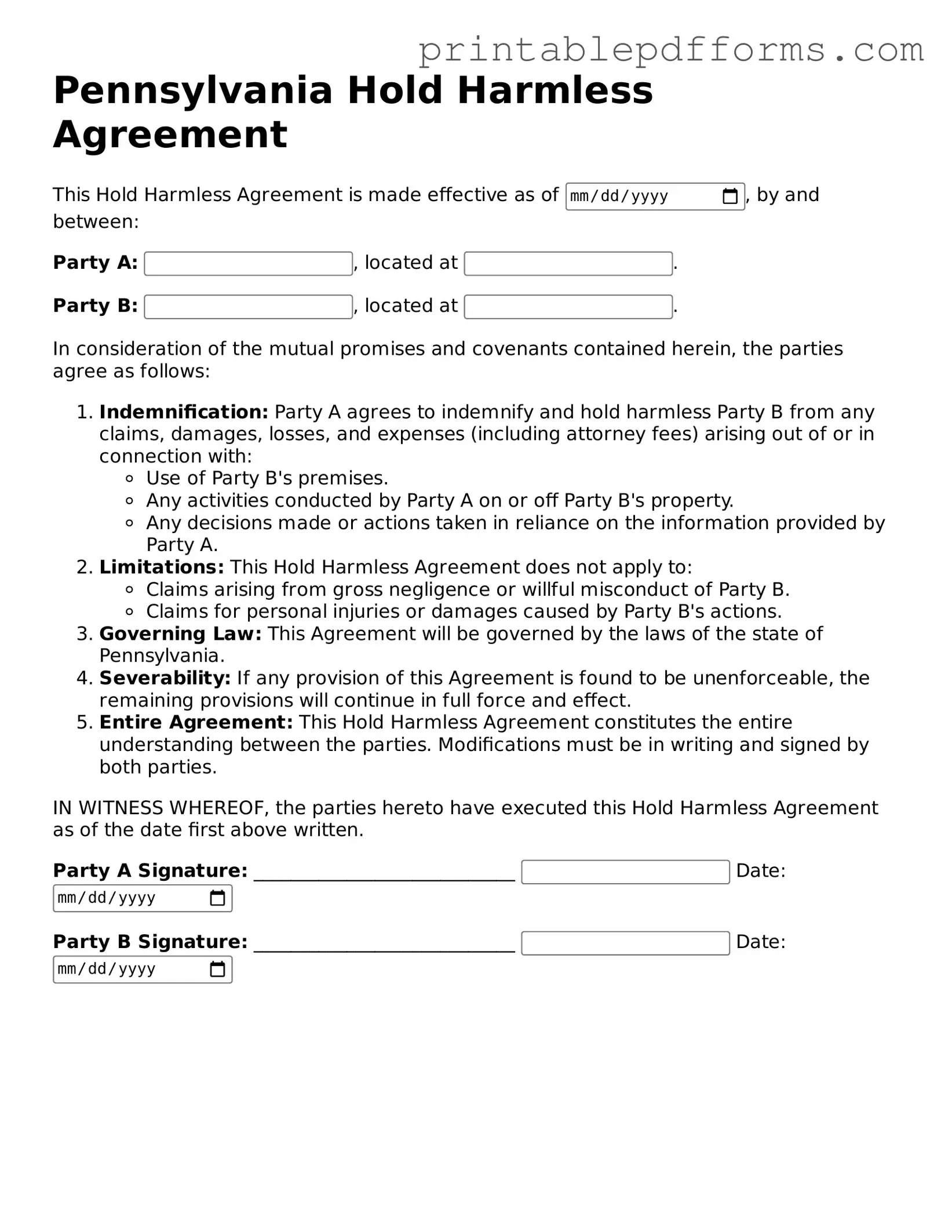Pennsylvania Hold Harmless Agreement Document
The Pennsylvania Hold Harmless Agreement is a legal document designed to protect one party from liability for certain risks or damages. This agreement is commonly used in various situations, including events, contracts, and property use. Understanding this form is essential for anyone looking to minimize their legal exposure.
To ensure your interests are protected, consider filling out the Hold Harmless Agreement form by clicking the button below.
Create This Document Online
